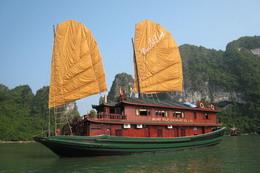| In August, the leaders of Japan, China and South Korea will hold a trilateral summit to discuss how they can pool their resources and expertise to develop and commercialize emerging green technologies.
 | Demolition work takes place near a wind farm in Rudong in China’s Jiangsu province on June 2, 2009 |
As it is, Japan has already sped ahead of the U.S. in hybrid-car technology. China is emerging as a leader in electric cars, solar power and wind power. South Korea is not yet known for anything environmentally friendly, but that is about to change. The Korean government is spending $31 billion to fund research into 27 green technologies, including non-silicon-based solar cells, biomass fuels, and carbon collection, storage and processing. (See the top 10 green stories of 2008.)
This unusual international collaboration is not solely aimed at reducing carbon emissions and husbanding the planet’s resources, although hammering out a united front among Asia’s top industrialized nations for the Copenhagen Climate Conference in December is one of the professed goals. It’s really a hardheaded, shrewd initiative to marry Japanese and Korean high technology with China’s manufacturing prowess, massive domestic market and bulging foreign-currency reserves â thus creating a formidable player in a postcrisis, low-carbon world.
What is becoming clear is that the fossil-fuel-fed industrial era is ending and that the leading power of that age, the U.S., might not be able to maintain its economic dominance. New Energy Finance, a provider of information and analysis on low-carbon technologies, estimates that investment in clean energy in Europe last year reached nearly $50 billion. The figure for North America is a much lower $30 billion. (Read more about the green-energy ideas out there.)
U.S. President Barack Obama appears to recognize the tectonic shift. Part of the $787 billion stimulus spending in the American Recovery and Reinvestment Act is meant for green initiatives: $2 billion to support lithium-ion batteries and hybrid electric systems, $800 million for a biomass program, $400 million to add electric technologies to vehicles and $400 million for geothermal technologies.But with public debt now equal to 82% of GDP and the budget deficit forecast to hit $1.4 trillion next year, the U.S. is in no position to spend more.
In contrast, East Asian economies have robust balance sheets, except for Japan. Unlike the U.S., China and South Korea do not need to print money to fund their stimulus packages. And their spending is geared toward the future rather than
toward mopping up the excesses of the past, as the U.S. must do. Green projects account for 81% of South Korea’s economic-stimulus programs and 38% of China’s â the proportion in the U.S. is just 12%.
Above all, the East Asians appear more committed to a green agenda than the U.S. is. South Korea has adopted “low-carbon green growth” as its new national vision and will spend $40 billion over four years to transform its old-school industrial policy into “a new paradigm of qualitative growth which uses less energy and is more compatible with environmental sustainability,” in the words of Prime Minister Han Seung-Soo, whose previous job was special envoy on climate change for the U.N. Secretary-General.
Will East Asia win the green wars? It’s not a foregone conclusion. The Europeans, who are leading the way on carbon-trading, are very much in the game, particularly in recycling and solar and wind power. Japan, China and South Korea also have some delicate issues to settle. One of the most contentious is likely to be intellectual-property protection, which is not particularly strong in China.
The U.S. may still be a contender. Sputnik sparked an extraordinary American effort that culminated in Neil Armstrong’s 1969 moon walk, which sealed the U.S.’s supremacy in space. This week, Washington launched a $25 billion program
to extend cheap loans to carmakers to help in reconfiguring their assembly lines for electric and other fuel-efficient vehicles. Interestingly, the money is available to not only America’s Ford but also Japan’s Nissan for one of its American factories.
East Asia’s bid for economic leadership in the low-carbon age may push the Americans â and certainly the Europeans â to intensify their engagement with green technologies. The space race spawned a lot of the advances in technology that we take for granted today. The green wars may do the same thing for low-carbon products and processes. If so, it’s a conflict the world must be willing to fight. VietNamNet/Time Magazine
|













